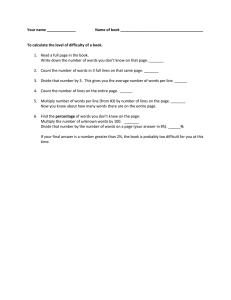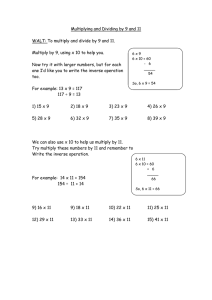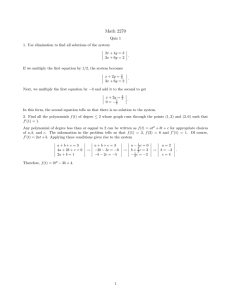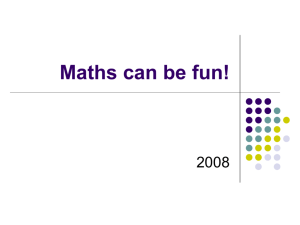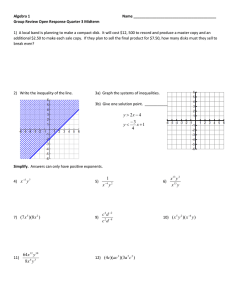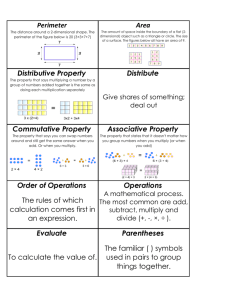SPRING 2001 CS 731: ADVANCED ARTIFICIAL INTELLIGENCE COMPUTER SCIENCES DEPARTMENT
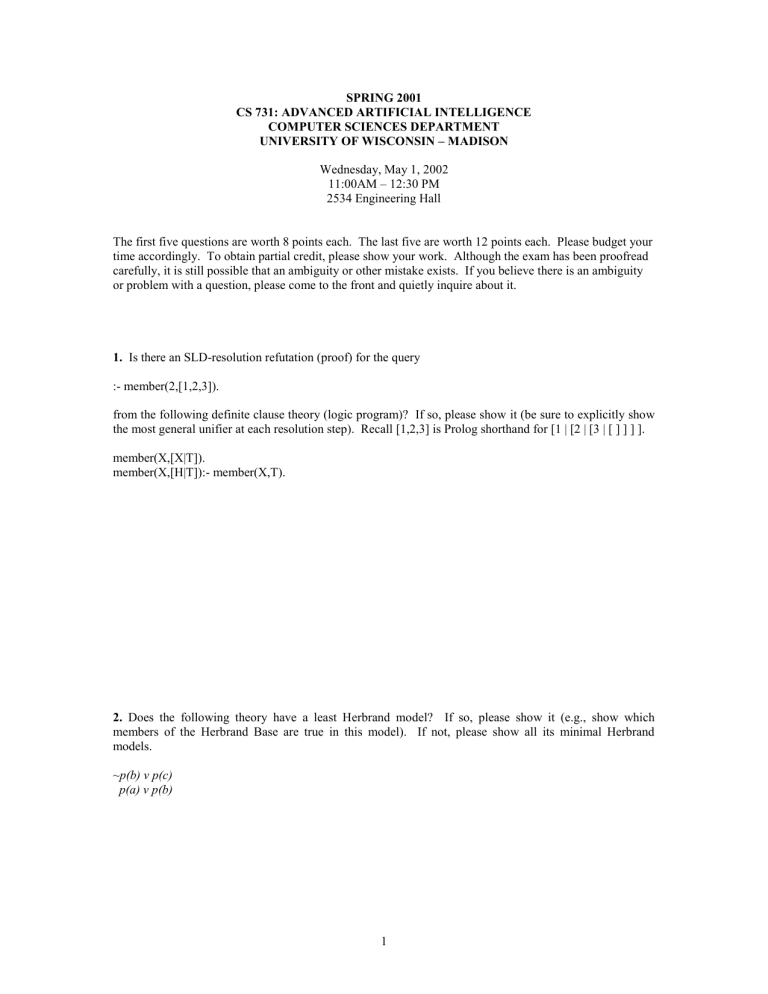
SPRING 2001
CS 731: ADVANCED ARTIFICIAL INTELLIGENCE
COMPUTER SCIENCES DEPARTMENT
UNIVERSITY OF WISCONSIN – MADISON
Wednesday, May 1, 2002
11:00AM – 12:30 PM
2534 Engineering Hall
The first five questions are worth 8 points each. The last five are worth 12 points each. Please budget your time accordingly. To obtain partial credit, please show your work. Although the exam has been proofread carefully, it is still possible that an ambiguity or other mistake exists. If you believe there is an ambiguity or problem with a question, please come to the front and quietly inquire about it.
1.
Is there an SLD-resolution refutation (proof) for the query
:- member(2,[1,2,3]). from the following definite clause theory (logic program)? If so, please show it (be sure to explicitly show the most general unifier at each resolution step). Recall [1,2,3] is Prolog shorthand for [1 | [2 | [3 | [ ] ] ] ]. member(X,[X|T]). member(X,[H|T]):- member(X,T).
2.
Does the following theory have a least Herbrand model? If so, please show it (e.g., show which members of the Herbrand Base are true in this model). If not, please show all its minimal Herbrand models.
~p(b) v p(c) p(a) v p(b)
1
3.
How many distinct literals are more general than (subsume) the literal p(a,a) , modulo renaming? Please show them. How many distinct clauses are more general than (subsume) p(a,a) , again modulo renaming?
4. Show the lgg (least general generalization) of the two clauses below. (You don’t have to reduce it; if you choose to reduce it, please be careful). p(a,a) v p(f(b),b) p(f(a),a) v p(a,b) v p(b,b)
5.
Consider an ILP problem specified with the following background knowledge plus(A,B,C):- C is A + B. decrement(X,Y):- X > 1, Y is X – 1. and the following positive and negative examples of a predicate multiply
%% Positive examples multiply(1,5,5). multiply(8,2,16). multiply(3,3,9). multiply(7,4,28).
%% Negative examples
:- multiply(3,2,7).
:- multiply(8,8,29).
:- multiply(4,6,22).
:- multiply(1,7,6).
Does there exist a theory of at most two clauses, built from only the predicates multiply, plus, and decrement, that is consistent with the data? If so, please show it.
2
6.
Give a junction tree for the Bayes net below. Show your moralization and triangulation steps.
B
A
C
F
D
H
E
I
M
J
N
L
3
7.
Consider the junction tree below. Suppose we are given evidence that A is false. Perform the upward and downward passes, and show the four final resulting tables. What is the probability distribution over F given this evidence?
e ~e g ~ g g ~g
CEG c 0.1 0.2 0.05 0.03
~c 0.3 0.01 0.15 0.1
ABC
b ~b c ~ c c ~c
a
0.01 0.02 0.1 0.2
~a
0.03 0.08 0.05 0.01
CDE EFG
d ~d e ~e e ~e
c
0.1 0.1 0.02 0.3
e
~c
0.04 0.1 0.1 0.01
~e
f ~f g ~g g ~g
0.01 0.02 0.15 0.13
0.1 0.04 0.1 0.09
4
8.
Given the Bayes net below, show the result of one cycle of the EM algorithm to update the CPTs using a single data point with A=true, B=true, C=true, D=false, E missing, and F=false. (Just cross out old values and write in new ones.)
A P(B)
T 0.6 <6,4>
F 0.3 <3,7> B
A
P(A)
0.2 <2,8>
C
A P(C)
T 0.7 <7,3>
F 0.1 <1,9>
D E
F
C P(F)
T 0.5 <5,5>
F 0.9 <9,1>
B P(D)
T 0.7 <7,3>
F 0.1 <1,9>
A B C P(E)
F F F 0.2 <2,8>
F F T 0.1 <1,9>
F T F 0.3 <3,7>
F T T 0.1 <1,9>
T F F 0.5 <5,5>
T F T 0.8 <8,2>
T T F 0.6 <6,4>
T T T 0.9 <9,1>
9. a. Describe two advantages of logic programs over Bayesian networks for the development of a query-answering system (e.g., for disease diagnosis). b.
Describe two advantages of logic programs over Bayesian networks as a representation for machine learning.
5
10.
Consider the Bayes net below. a.
Which variables are d-separated from I given evidence (observed values) for variables A and
B? b.
Which variables are d-separated from I given evidence (observed values) for variables A, B, and N?
B
A
C
F
D
G H
E
I J K L
M
N
6
